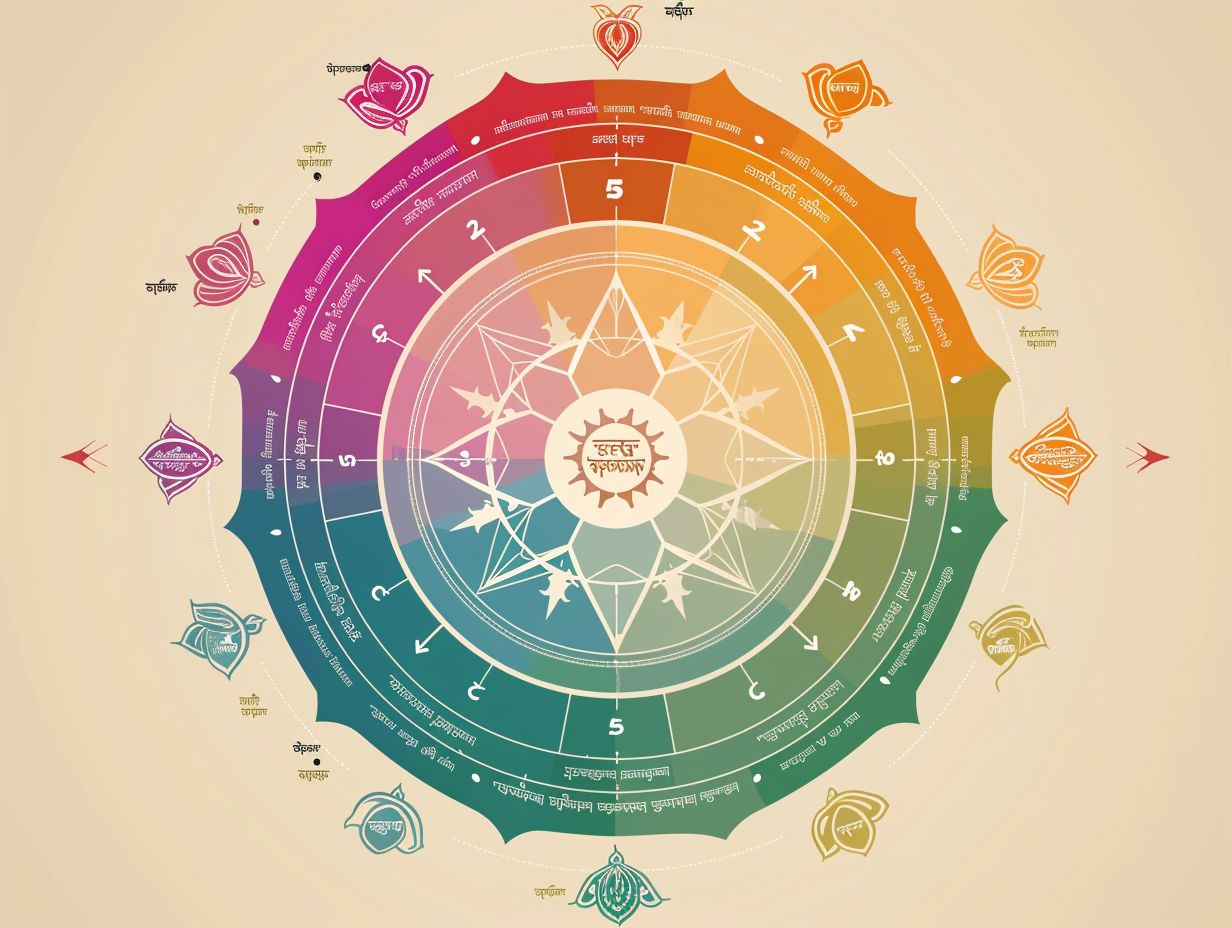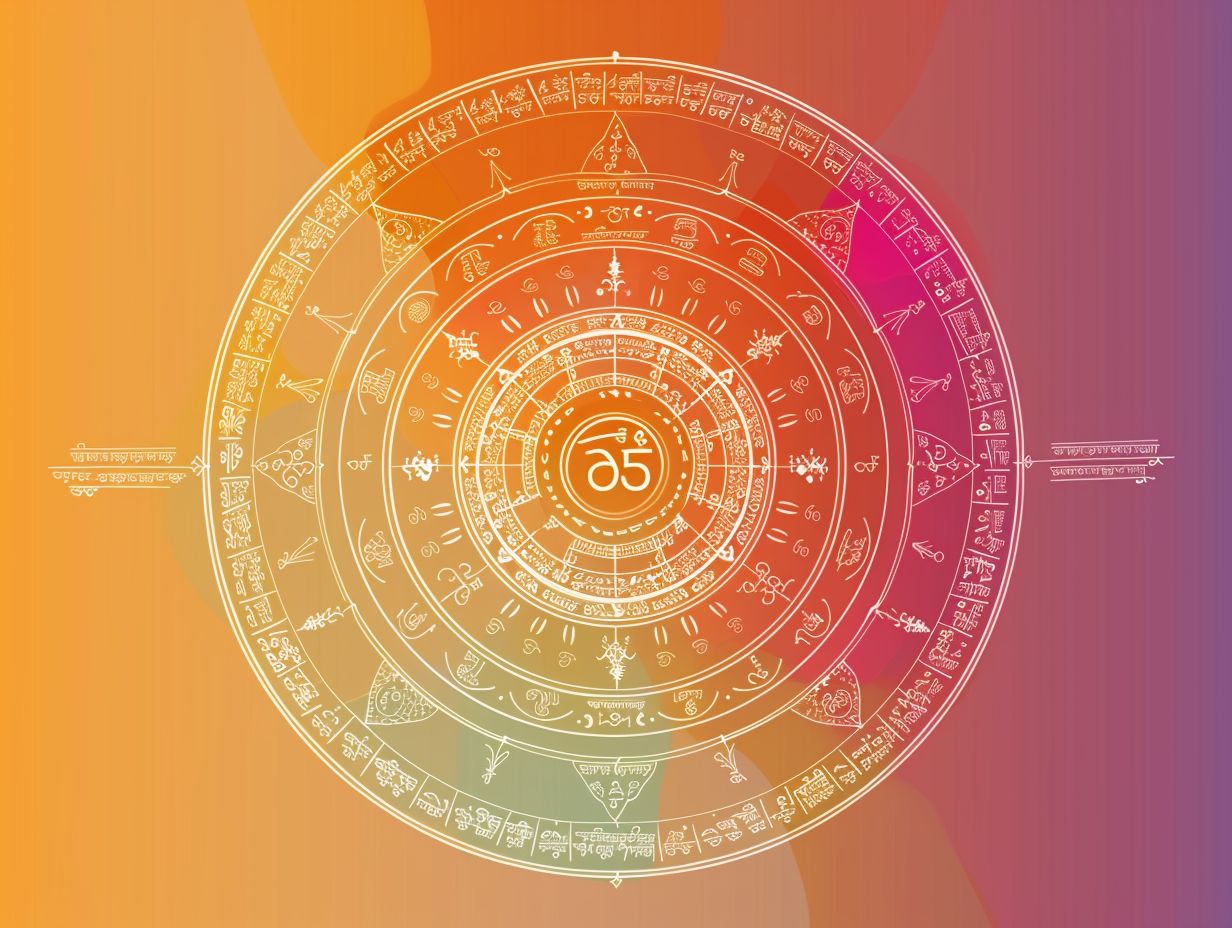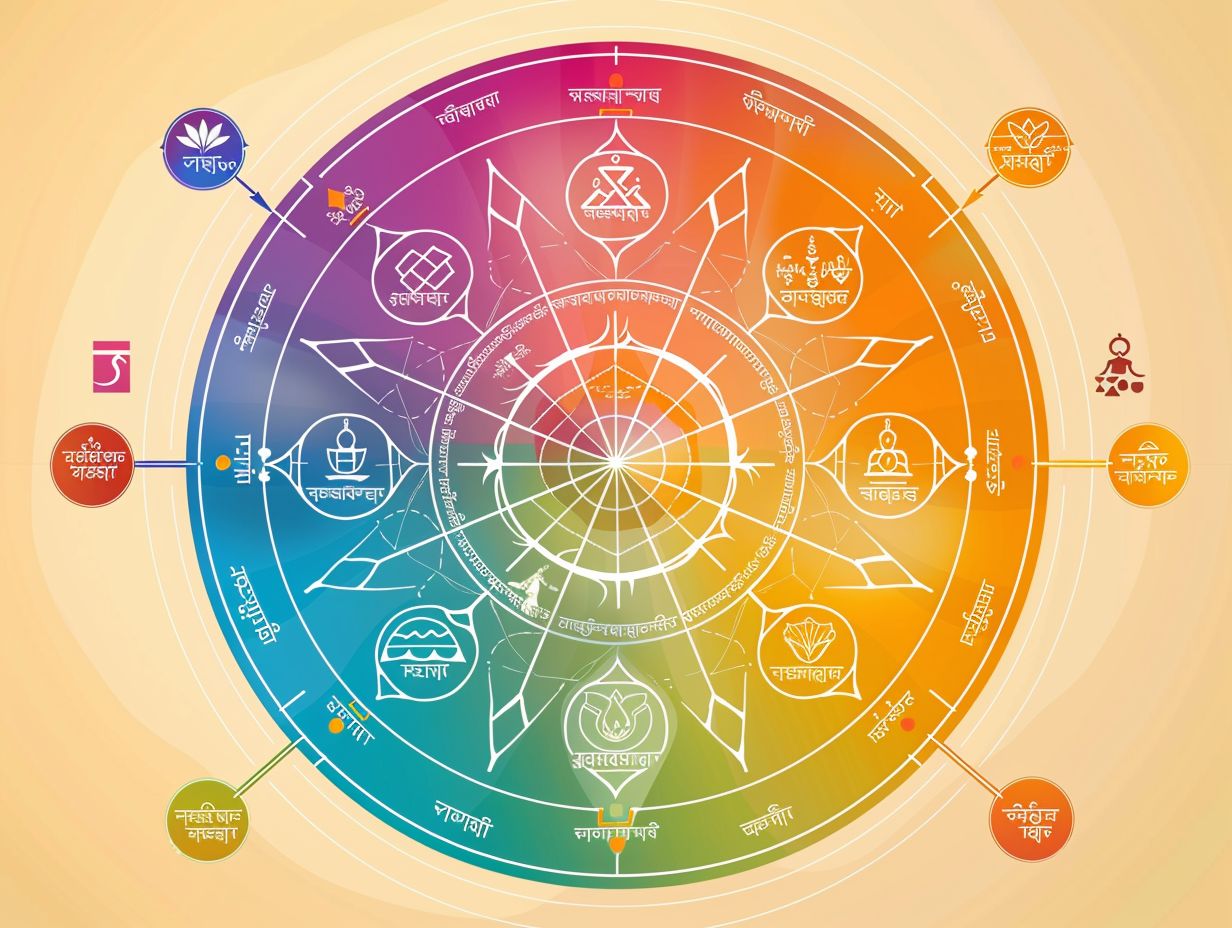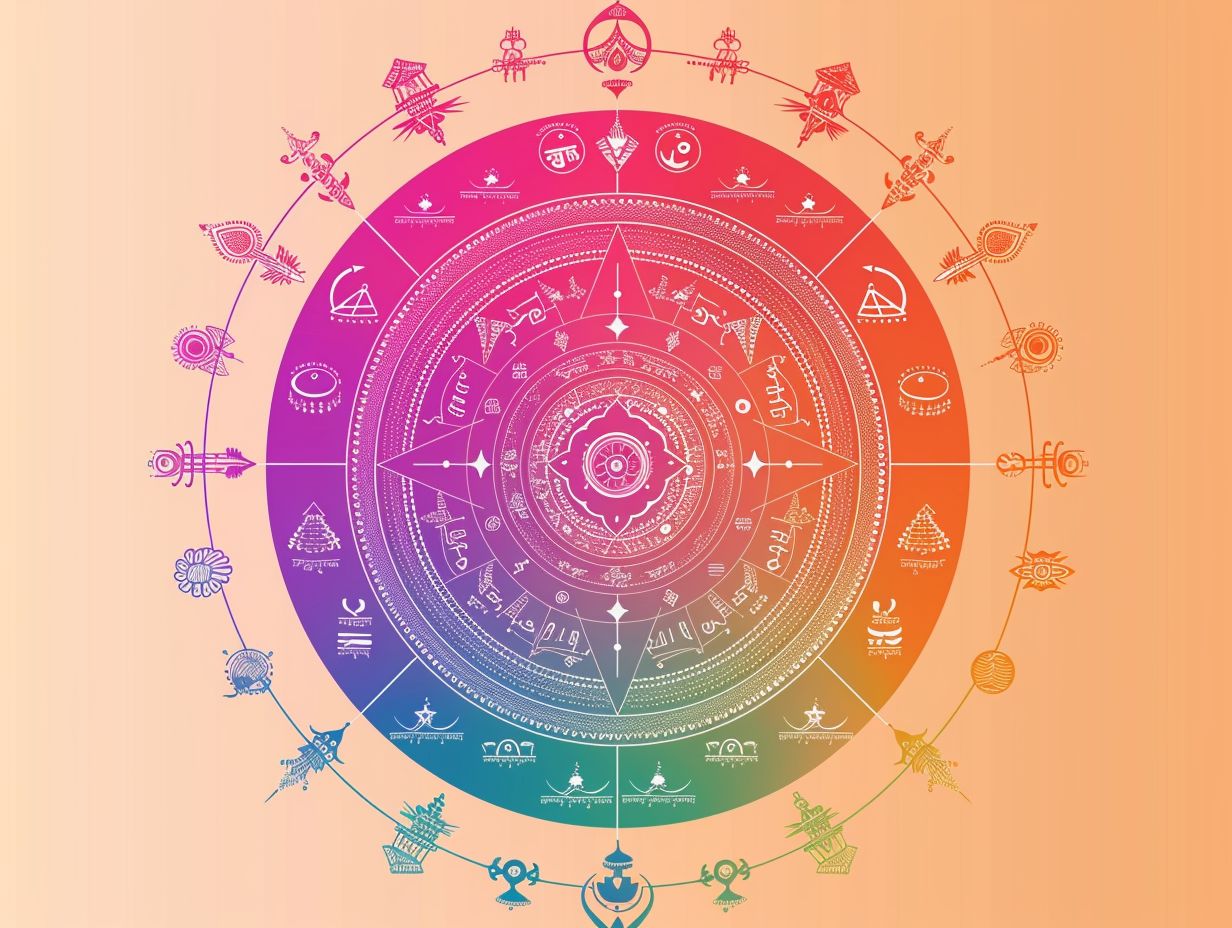Understanding the 25 Elements in Samkhya
The Samkhya philosophy, one of the most ancient schools of thought in Indian philosophy, presents profound insights into the nature of existence through its examination of 25 essential elements. This framework intricately explores the interplay between consciousness, nature, and the mind, illuminating pivotal concepts such as ego, intellect, and the senses.
By investigating these elements, individuals can cultivate a deeper understanding of both their inner and outer worlds, along with the pathways to happiness, suffering, and ultimate liberation. Each element reveals crucial insights that shape human experiences, guiding one toward a more enlightened existence.
1. Purusha (Consciousness)

In the realm of Samkhya philosophy, Purusha embodies the essence of consciousness, representing a fundamental reality that transcends the material world. As the observer within the expansive dualism of existence, Purusha facilitates the unfolding narrative of life, learning, and liberation through the intricate interplay of consciousness and prakriti.
This profound concept underscores the significance of self-awareness, illuminating the relationship between Purusha and the self, ultimately guiding individuals on their spiritual journeys toward enlightenment and a deeper understanding of reality.
The implications of this understanding resonate profoundly within the domains of personal development and holistic health, emphasizing the cultivation of self-knowledge as a vital means to navigate the complexities of life. By acknowledging the distinction between the eternal observer and the transient facets of identity, individuals can embark on a transformative journey toward self-realization.
Vedic texts, particularly the Upanishads, further illuminate this path, advocating for practices that promote deep meditation and introspection. Through the harmonious integration of Purusha and prakriti, one can attain balance, fostering not only inner peace but also the realization of a profound interconnectedness with the world that envelops them.
2. Prakriti (Nature)
In the context of Samkhya philosophy, Prakriti embodies the material essence of existence, encompassing the three gunas sattva, rajas, and tamas that play a pivotal role in the evolution of all beings and their interactions with consciousness. This dynamic interplay forms a sophisticated framework for understanding both reality and existence.
The interaction between Prakriti and Purusha, representing pure consciousness, illustrates how the interplay of these qualities not only shapes physical matter but also influences mental states and spiritual experiences. Essentially, the gunas govern the characteristics of thoughts, emotions, and behaviors, thereby affecting one’s perception of both the external world and the self.
Sattva promotes clarity and harmony, nurturing spiritual growth, while rajas can engender restlessness and ambition, propelling desires forward. In contrast, tamas often leads to inertia and confusion, obstructing progress along the spiritual path.
By recognizing these profound influences, individuals are give the power toed to navigate their existential inquiries with greater effectiveness, striving for a balance that enhances self-awareness and fosters a deeper connection to the cosmos.
3. Mahat (Intellect)
Mahat, often celebrated as the cosmic intellect, occupies a central position within the Samkhya system, serving as the wellspring of cognitive processes that foster self-awareness. This enables individuals to navigate their conscious experiences and acquire transcendental insights into the nature of reality.
Through the prism of Mahat, one can delve into the intricate relationship between the mind and body, appreciating how this universal intelligence not only promotes cognitive development but also deepens understanding of philosophical tenets. Engaging with Mahat prompts individuals to introspect on their thoughts and actions, thereby facilitating personal growth and transformation.
This journey enriches intellectual endeavors while cultivating a profound awareness of one s interconnectedness with the cosmos.
Ultimately, the exploration of Mahat possesses the potential to instigate significant shifts in consciousness, paving the path toward enlightenment and fostering a lasting sense of peace.
4. Ahamkara (Ego)
Ahamkara, often referred to as the ego, serves as a pivotal element within the framework of Samkhya philosophy. It embodies the aspect of self that identifies with individuality, shaping perception and thereby influencing one s existential understanding as well as the duality that characterizes human experience.
This facet of consciousness not only fosters a sense of separateness but also drives the personal narratives that significantly shape one s identity and worldview. When individuals become aware of the ahamkara’s impact on their thoughts and behaviors, they embark on a profound journey of self-discovery, gradually peeling away the layers of conditioned responses and beliefs.
This introspective process ultimately fosters greater inner peace by challenging the often illusory boundaries created by the ego. By comprehending the role of the ego in their spiritual growth, individuals can cultivate a more authentic existence, paving the way for deeper connections with themselves and the world around them.
5. Manas (Mind)
In Samkhya philosophy, Manas is conceptualized as the mind, an essential entity that facilitates cognitive processes, perception, and the navigation of mental states. This dynamic aspect significantly shapes an individual’s journey toward self-understanding and self-realization through mindfulness and meditation.
Manas plays a pivotal role in how one experiences the world, influencing not only thoughts and feelings but also the cultivation of awareness. By fostering clarity and attentiveness, the function of Manas establishes a foundation for deeper meditation practices, give the power toing individuals to rise above the cacophony of everyday life.
As inner awareness develops, a clearer relationship between thoughts and emotions emerges, leading to enhanced mental wellness and a harmonious balance within. Thus, engaging with Manas not only supports personal growth but also enriches spiritual experiences, guiding practitioners toward enduring peace and fulfillment.
6. Buddhi (Discernment)
Buddhi, a term embodying discernment and higher intellect, stands as a fundamental element of Samkhya philosophy. It give the power tos individuals to distinguish between the transient and the eternal, thereby cultivating an environment conducive to truth-seeking and ethical dimensions within their spiritual journey.
This profound cognitive aspect is instrumental in shaping an individual’s moral compass and understanding of reality. By harnessing Buddhi, one can glean insights into the ramifications of their actions, fostering mindful decisions that resonate with their values and spiritual goals.
Buddhi serves as a guiding force, steering individuals away from ignorance and assisting them in navigating life’s complexities with clarity. Ultimately, the cultivation of this higher intellect not only enhances self-awareness but also fosters a deeper connection to universal truths, paving the way for continuous growth and ethical living.
7. Indriyas (Senses)

Indriyas, or the senses, serve as essential components of the human experience within Samkhya philosophy. They provide the faculties through which perception unfolds and influence how consciousness engages with the material nature of reality, thereby guiding existential inquiry and spiritual practice.
Each sense assumes a distinct role, shaping how individuals interpret their environments and interact with the varying gunas, or qualities of nature. This interplay is of paramount importance, as it not only dictates one s moment-to-moment experience but also impacts deeper states of awareness.
As practitioners begin to grasp the intricacies of their indriyas, they cultivate a heightened sense of mindfulness, which enriches their spiritual practices and propels them on a transformative personal journey. By looking into how the senses shape perceptions, one can reveal layers of consciousness that nurture a more profound connection to both the self and the universe, ultimately facilitating growth and enlightenment.
8. Tanmatras (Subtle Elements)
Tanmatras, the subtle elements of perception within the Samkhya philosophy, are fundamental to the classification of sensory experiences. They serve as a bridge between the gross physical elements and the elevated realms of consciousness, enriching the holistic understanding of existence.
These subtle essences sound, touch, form, taste, and smell function as intermediaries through which individuals connect with their surroundings. By facilitating sensory perception, tanmatras foster a more profound interaction with material nature, enabling an exploration that delves deeper into both the self and the universe.
They wield significant influence in the dance of consciousness, shaping how experiences are interpreted and understood, and ultimately molding one s reality. Engaging with tanmatras allows individuals to cultivate awareness, illuminating the intricate connections between perception and the essence of their being, thus paving the way for profound self-discovery.
9. Bhutas (Gross Elements)
In Samkhya philosophy, Bhutas denote the gross elements that form the foundation of the material world, creating a framework for understanding existence and dualism. These elements engage with the subtle Tanmatras to manifest the cosmic order and delineate the nature of reality.
The five primary elements earth, water, fire, air, and space are pivotal in shaping the physical universe and influencing human perceptions. The relationship between Bhutas and consciousness illustrates a complex interplay where the tangible and intangible aspects of reality converge.
From this viewpoint, one cannot fully inhabit the material realm without recognizing the subtle forces that inform awareness, intention, and perception.
This dynamic encourages a profound exploration of how physical forms and mental states coalesce to shape experiences, ultimately providing invaluable insights into the essence of being and the fundamental nature of existence.
10. Antahkarana (Inner Instrument)
Antahkarana, often referred to as the inner instrument, encompasses the faculties of mind, intellect, and ego, serving as the mediating force between the self and consciousness. This intricate framework is essential in shaping how individuals perceive their thoughts and emotions, facilitating greater clarity in discernment.
By harmonizing the various components of the inner instrument, individuals can cultivate a deeper self-awareness that fosters transformation. The interconnections among the mind, intellect, and ego lay the groundwork for effectively navigating the complexities and challenges of life.
As one embarks on a journey into spiritual practices, the cultivation of Antahkarana enhances the ability to discern intentions and motivations, ultimately leading to a richer understanding of one s path and purpose within the grand tapestry of existence.
11. Chitta (Memory)
Chitta, as it pertains to memory within the framework of Samkhya philosophy, occupies a crucial position in shaping conscious experiences and mental states. It influences self-awareness and directs spiritual practices through the recollection of knowledge and past impressions.
This dual function of Chitta not only serves to archive the vast spectrum of life experiences but also enables individuals to engage in reflection, cultivating a richer understanding of their present behaviors and reactions. By examining these memories, individuals can discern patterns that either facilitate or obstruct their personal growth, ultimately give the power toing them to make deliberate choices in the here and now.
When utilized effectively, Chitta functions as a mirror, not merely reflecting one’s past but also illuminating the path toward future potential. This heightened self-awareness is vital for personal transformation, guiding individuals on their quest for deeper spiritual insight and fulfillment.
12. Samkalpa (Desire)
Samkalpa, or the concept of desire, serves as a pivotal element of human consciousness within Samkhya philosophy. It propels individuals toward their goals and aspirations while simultaneously prompting profound existential inquiries regarding the nature of self and fulfillment.
By engaging with this intrinsic aspect of their being, individuals embark on a transformative journey that not only clarifies their ambitions but also cultivates a deep understanding of their inner selves. The exploration of one s desires compels reflection on individual motivations, values, and the deeper significances behind various pursuits.
This introspective journey often unveils the interconnectedness of existence, enhancing awareness of how personal aspirations resonate with the universal quest for purpose and satisfaction.
Ultimately, a nuanced understanding of samkalpa give the power tos individuals to navigate their spiritual practices, fostering growth that is rooted in authenticity and holistic self-awareness.
13. Vikalpa (Imagination)

Vikalpa, or imagination, emerges as a formidable instrument within the Samkhya framework, give the power toing individuals to transcend their immediate reality and engage in cognitive processes that profoundly shape their understanding of existence and consciousness.
By nurturing a deeper connection with the inner self, this mental faculty encourages individuals to envision alternative paths, question established beliefs, and innovate in their approaches to life s complexities. As practitioners embrace Vikalpa, they unlock avenues for personal transformation, allowing their imagination to navigate through the intricate layers of reality and tap into the essence of their spiritual journey.
This creative expedition not only amplifies one s capacity for critical thinking but also fosters empathy and insight qualities that are essential for meaningful existential exploration. Ultimately, imagination serves as a bridge between the known and the unknown, guiding individuals toward a richer and more authentic experience of being.
14. Dharma (Duty)
Dharma, which signifies duty or righteousness in Samkhya philosophy, holds a position of utmost importance for those seeking to align themselves with ethical principles. This alignment fosters a deeper connection with consciousness and facilitates spiritual practices aimed at achieving holistic health.
By adopting this fundamental principle, individuals can navigate the complexities of life with a purpose that transcends mere existence. The practice of Dharma prompts individuals to contemplate their responsibilities not only within their families and communities but also in relation to the broader cosmos.
Such reflection sharpens their ethical compass and nurtures a heightened self-awareness, which is essential for personal development. As individuals diligently fulfill their duties, they often undergo a profound transformation in consciousness, recognizing their integral role in the intricate tapestry of life.
Ultimately, this unwavering commitment to Dharma cultivates harmony both within oneself and with the surrounding environment, promoting a balanced approach to spiritual growth.
15. Adharma (Opposite of Dharma)
Adharma, representing the antithesis of Dharma, embodies actions that stray from ethical principles, posing considerable challenges to individual consciousness and personal development within the dualistic framework of existence as articulated in Samkhya philosophy.
These actions not only obstruct one’s journey toward spiritual enlightenment but also foster discord and suffering in interpersonal relationships. Individuals may find themselves ensnared in a cycle of negative behavior, which can lead to heightened feelings of confusion and alienation.
By acknowledging the manifestations of Adharma in their lives, individuals can initiate the process of confronting and dismantling these detrimental patterns. This journey encourages a deeper understanding of oneself, paving the way for transformative growth.
Ultimately, transcending Adharma cultivates enhanced self-awareness, enabling individuals to align more closely with their ethical beliefs and embrace a more harmonious existence.
16. Sukha (Happiness)
Sukha, a term that translates to happiness in Samkhya, embodies a vital aspect of the human experience. It signifies a state of well-being that emerges from a harmonious alignment between consciousness and the material world, fostering spiritual growth and encouraging holistic perspectives.
This concept underscores the transformative power of joy, highlighting how a profound sense of contentment can enhance one s spiritual practices. When individuals cultivate Sukha, their spiritual journeys often take on greater meaning, as happiness nurtures a deeper connection to the self and to others.
Methods for nurturing this sense of well-being in daily life may encompass mindfulness meditation, gratitude exercises, and engaging in activities that evoke joy. By intentionally focusing on positive experiences and fostering a supportive environment, individuals can deepen their understanding of Sukha, enriching their personal transformation and paving the way for a more fulfilling existence.
17. Dukkha (Suffering)
Dukkha, or suffering, stands as a fundamental concept in Samkhya philosophy, illuminating the intricacies of the human condition. It serves as a catalyst for existential understanding, compelling individuals to delve into the depths of consciousness and grapple with the duality of their experiences.
By recognizing and confronting the existence of suffering, one can begin to peel back the complex layers of reality, unveiling profound insights that go beyond mere survival. This awareness often serves as a mirror, reflecting the insecurities and discontent that shape one s existence.
Engaging with Dukkha invites individuals to embark on a transformative journey, where they distinguish between transient pleasures and enduring contentment. In this process, the acknowledgment of suffering opens the door to deeper self-reflection and spiritual inquiry, paving the way for liberation from the cycles of attachment and aversion that obstruct genuine peace.
18. Samskaras (Impressions)
Samskaras, characterized as the enduring impressions left by past experiences, play a critical role in shaping consciousness and influencing future behaviors. In the context of Samkhya philosophy, they significantly impact self-awareness and the journey of personal transformation.
Understanding these psychological frameworks offers an essential lens for individuals to examine their habitual patterns and the subconscious beliefs that emerge from them. By recognizing the presence of these unique impressions, one can begin to uncover how they manifest in daily life, often steering thoughts and actions in an unconscious manner.
The importance of engaging with samskaras lies in the ability to identify and transform negative impressions, fostering conscious experiences and encouraging positive emotional growth. Techniques such as mindfulness, meditation, and cognitive reframing emerge as powerful tools in this transformative process. These methods facilitate a shift in perspective, ultimately leading to enhanced self-awareness and a more balanced psychological state.
19. Karmas (Actions)

Karmas, or actions, serve as the cornerstone of Samkhya philosophy, underscoring the ethical ramifications of every choice and its influence on consciousness. This principle guides individuals on their journey toward spiritual growth and personal development.
These actions intricately shape an individual’s inner reality and chart the course of their spiritual journey, illuminating the profound interconnectedness between deeds and the state of awareness. As individuals navigate their daily lives, the choices they make may either align with their authentic selves or stray from their core values, presenting continuous opportunities for reflection and realignment.
By fostering mindfulness and engaging in self-awareness, individuals can gain clarity on their values, facilitating intentional actions that resonate with their spiritual aspirations. Techniques such as meditation, journaling, and ethical introspection give the power to individuals to scrutinize their motivations, ensuring that each action contributes positively to their consciousness and supports the quest for a more fulfilling spiritual existence.
20. Moksha (Liberation)
Moksha, the pinnacle of achievement in Samkhya philosophy, represents liberation from the relentless cycle of birth and rebirth. It signifies a profound understanding of consciousness and provides a pathway for spiritual growth and existential exploration.
This esteemed state is not merely an endpoint; it acts as a catalyst for a deeper comprehension of life s fundamental questions. It inspires practitioners to pursue various avenues such as yoga, meditation, and devotion each tailored to strip away the layers obscuring the true self and the attachments to the material world.
Through dedicated engagement in these spiritual disciplines, individuals can undergo a remarkable transformation, leading them to a more authentic existence. As they delve into the nature of consciousness, they begin to appreciate the interconnectedness of all beings, nurturing compassion and a sense of unity with the universe. This journey ultimately guides them toward the cherished goal of liberation.
Frequently Asked Questions
What are the 25 Elements in Samkhya?
The 25 Elements in Samkhya are the basic components that make up the universe according to the Samkhya philosophical system. They include the five gross elements, the five subtle elements, the five sense organs, the five organs of action, and the five subtle senses.
What are the five gross elements in Samkhya?
The five gross elements in Samkhya are earth, water, fire, air, and ether. These are physical elements that make up the material world and are responsible for the creation of all physical objects.
What are the five subtle elements in Samkhya?
The five subtle elements in Samkhya are smell, taste, form, touch, and sound. These elements are not physical in nature but are experienced through the physical senses.
What are the five sense organs in Samkhya?
The five sense organs in Samkhya are the nose, tongue, eyes, skin, and ears. These organs are responsible for experiencing the subtle elements and transmitting them to the mind.
What are the five organs of action in Samkhya?
The five organs of action in Samkhya are hands, feet, mouth, reproductive organs, and excretory organs. These organs are responsible for carrying out physical actions in the material world.
What are the five subtle senses in Samkhya?
The five subtle senses in Samkhya are smell, taste, sight, touch, and hearing. These senses are responsible for experiencing the subtle elements and transmitting them to the mind.
